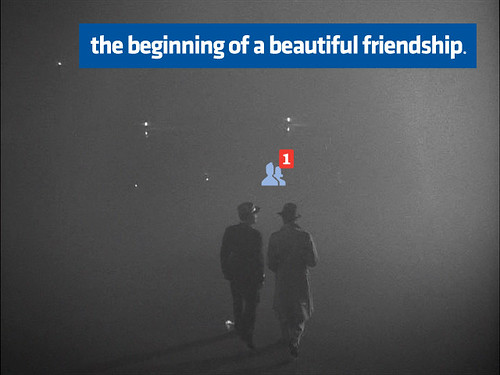How To Influence Facebook Users

Facebook users just want to belong.
With more than 800 million registered users, that’s a lot of us that want belong to something.
Maybe, just maybe, your organization can help them belong to something of value, something cool and hip, something that promotes life-meaning and purpose, or something that helps them professionally.
People Use Facebook For Two Primary Reasons
Boston University Professors Ashwini Nadkarni and Stefan G. Hofmann published a study, Why Do People Use Facebook in November, 2011 in the Personality and Individual Differences Journal. Their findings show that Facebook use is motivated by two primary social needs:
- The Need To Belong
- The Need For Self-Presentation
The Need To Belong
Humans are highly social creatures. We have an intrinsic drive to associate with others and gain social acceptance. Our very human nature craves being with others.
We like to believe that we can be Lone Rangers able to do anything and be anything on our own. Introverts especially like to claim that they don’t need anyone else. The truth is that we are highly dependent on the social support of others (Baumeister & Leary, 1995.)
Actually, our self-esteem, sense of belonging, emotional well-being, self-efficacy, self-worth, sense of life-meaning, purpose and most importantly, health are negatively impacted if we are ostracized from social support and the social group. Yes, that’s right; research has shown that the connections we build in Facebook actually have a positive impact on our health and mental wellness. (Baumeister & Leary, 1995; Baumeister & Tice, 1990; Stillman, Baumeister & Lambert et al., 2009; Zadro, Boland & Richardson, 2006).
How Organizations Can Influence The Need To Belong
Most nonprofit organizations started with a need to create a community where like-minded individuals could gather and share.
Facebook provides a great opportunity for organizations to help gather their tribe online and strengthen their connections. It’s a place to allow individuals to ask for help, voice their opinions and “like” or discuss each other’s insights. Acting as a conduit of connections and catalysts of conversations can help people feel accepted and a sense of belonging. This is also why posting pictures of members in action is so compelling and attractive to Facebook users.
Nadkarni and Hofmann’s study showed that online Facebook use fostered and strengthened offline connections (Lou, 2010). Even further, Facebook use benefited socialization in face-to-face community experiences and improved social learning outcomes (Yu and colleagues 2010). Facebook actually helped with skill-based learning.
The Need For Self Presentation
Facebook users communicate their real personality rather than promoting an idealized version of themselves (Back et al., 2010). Studies show that their online self-representation accurately reflects their offline behavior and personality traits. So users’ self-disclosures have a positive influence on their credibility. (Mazer, Murphy & Simonds 2009)
When teachers use Facebook to self-disclose personal pictures, messages from friends and family, and opinions, their students perceive similarities between themselves and the teacher. This has a positive influence on the students’ participation and positively affects their learning. (Mazer, Murphy & Simonds, 2009).
How Organizations Can Influence The Need For Self Presentation
It’s critical that organizations highlight and allow customers and potential customers to see Facebook profiles of their leaders and staff. The impressions formed from personal Facebook profiles provide viewers with positive information about their likeability in the offline world.
The more the organization can showcase its humanity and people, the more it’s likely to attract and influence others. The more friends a leader has, the more viewers assume they have positive offline social connections as well.
Organizations should encourage leaders and staff to share their profiles with others. The research shows that most viewers perceive that use of Facebook positively (Mazer, Murphy & Simonds, 2009).
How can organizations use Facebook features–friends list, wall, status updates, events, photos, videos messages, chat and like to influence others? What does an organization’s ban of Facebook use say about the culture of that organization?

